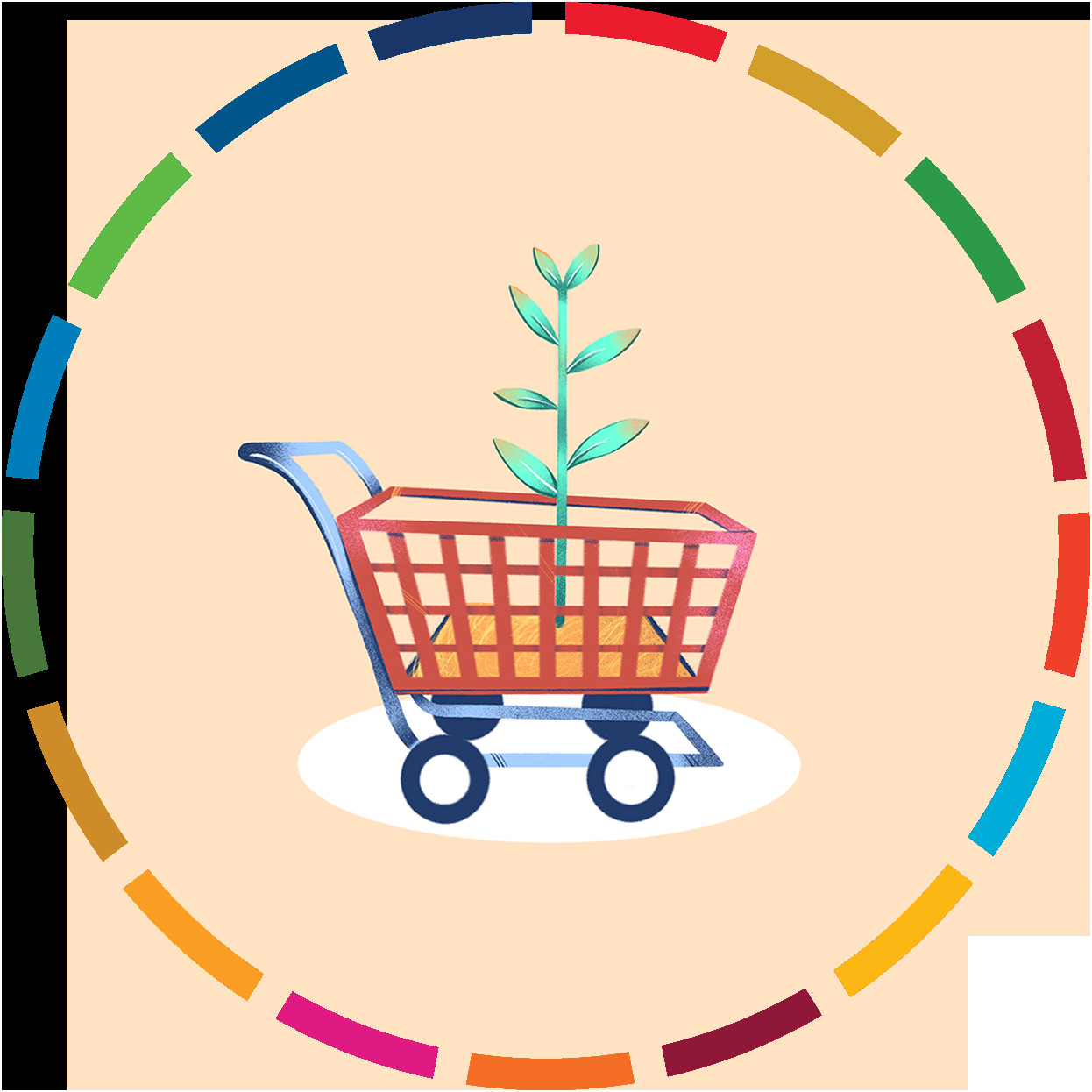Can We Save Climate Change and simultaneously save money? Absolutely, and savewhere.net is here to guide you. By making conscious choices about energy consumption, transportation, diet, and waste reduction, you can contribute to a healthier planet while also boosting your financial well-being. Discover actionable strategies, eco-friendly living, and ways to reduce your carbon footprint on savewhere.net.
1. Understanding the Climate Crisis and Your Role
The climate crisis is a global challenge, but individual actions collectively make a significant impact. Understanding the sources of greenhouse gas emissions and identifying your carbon footprint are the first steps toward making a difference.
What is Climate Change?
Climate change refers to long-term shifts in temperatures and weather patterns. These shifts may be natural, such as through variations in the solar cycle. But since the 1800s, human activities have been the main driver of climate change, primarily due to burning fossil fuels (like coal, oil, and gas), which produces heat-trapping greenhouse gases. According to the UN, climate change touches every corner of the globe and poses an existential threat to life as we know it.
Why Should You Care?
Climate change poses significant risks, including rising sea levels, extreme weather events, and disruptions to ecosystems. Addressing climate change is not just an environmental imperative; it is also an economic one. The costs of inaction far outweigh the investments needed to transition to a sustainable economy. Moreover, many climate-friendly actions can lead to significant cost savings for individuals and households.
Calculating Your Carbon Footprint
Your carbon footprint is the total amount of greenhouse gases generated by your actions. Several online tools can help you estimate your carbon footprint, taking into account factors such as your energy consumption, transportation habits, and dietary choices. Understanding your carbon footprint allows you to identify areas where you can make the most significant reductions.
2. Saving Energy at Home: A Win-Win for the Planet and Your Wallet
Reducing energy consumption at home is one of the most effective ways to lower your carbon footprint and save money. Simple changes, such as switching to LED lighting and improving insulation, can make a big difference.
 photocomposition: an electric plug being disconnect
photocomposition: an electric plug being disconnect
Switch to LED Lighting
LED light bulbs use up to 75% less energy and last much longer than incandescent bulbs. While the initial cost may be higher, the long-term savings on energy bills more than make up for it. According to the U.S. Department of Energy, widespread use of LED lighting could save Americans billions of dollars annually.
Improve Insulation
Proper insulation can significantly reduce heating and cooling costs. Adding insulation to your attic, walls, and floors helps to maintain a consistent temperature inside your home, reducing the need for excessive heating or air conditioning. This not only saves energy but also improves the comfort of your home.
Use Energy-Efficient Appliances
When it’s time to replace old appliances, choose energy-efficient models with the Energy Star label. These appliances are designed to use less energy, saving you money on your utility bills. From refrigerators and washing machines to dishwashers and air conditioners, energy-efficient appliances can make a significant impact on your overall energy consumption.
Unplug Electronics
Many electronics continue to draw power even when they are turned off. Unplugging devices like TVs, computers, and chargers when they are not in use can prevent “phantom loads” and save energy. Using power strips to easily turn off multiple devices at once is a convenient way to reduce standby power consumption.
Adjust Your Thermostat
Adjusting your thermostat by a few degrees can lead to substantial energy savings. In the winter, set your thermostat to a lower temperature when you are away or asleep. In the summer, raise the thermostat when you are not home. Programmable thermostats can automate these adjustments, ensuring that you are only using energy when you need it.
Seal Drafts
Sealing drafts around windows and doors can prevent heat from escaping in the winter and cool air from leaking out in the summer. Use weather stripping, caulk, or foam sealant to fill gaps and cracks. This simple and inexpensive measure can significantly improve your home’s energy efficiency.
3. Embracing Renewable Energy: Powering Your Home Sustainably
Switching to renewable energy sources, such as solar and wind power, is a powerful way to reduce your carbon footprint and support a cleaner energy future.
 photocomposition: a windmill
photocomposition: a windmill
Install Solar Panels
Solar panels convert sunlight into electricity, providing a clean and renewable energy source for your home. While the initial investment can be significant, solar panels can significantly reduce or even eliminate your electricity bills over time. Many states and local governments offer incentives, such as tax credits and rebates, to help offset the cost of installing solar panels.
Join a Community Solar Program
If installing solar panels on your roof is not feasible, consider joining a community solar program. These programs allow you to purchase or lease a share of a solar farm and receive credits on your electricity bill for the energy generated by your share. Community solar programs make renewable energy accessible to renters and homeowners who may not be able to install their own solar panels.
Choose a Green Energy Supplier
In many areas, you have the option to choose your electricity supplier. Consider switching to a supplier that offers electricity generated from renewable sources, such as wind, solar, and hydropower. While green energy plans may be slightly more expensive than traditional electricity plans, they support the development of renewable energy and reduce your reliance on fossil fuels.
4. Sustainable Transportation: Reducing Emissions on the Go
Transportation is a major source of greenhouse gas emissions. Choosing sustainable transportation options, such as walking, biking, and public transit, can significantly reduce your carbon footprint and improve your health.
 Photocomposition: a person riding a bike
Photocomposition: a person riding a bike
Walk or Bike
Walking or biking instead of driving is a great way to reduce emissions and get exercise. For short trips, consider leaving the car at home and walking or biking to your destination. Many cities are investing in bike lanes and pedestrian infrastructure to make these options safer and more convenient.
Use Public Transportation
Public transportation, such as buses, trains, and subways, is a more efficient way to move people than individual cars. Using public transportation reduces traffic congestion, air pollution, and greenhouse gas emissions. Consider using public transportation for your daily commute or for longer trips within and between cities.
Carpool
Carpooling with colleagues, friends, or neighbors is another way to reduce emissions and save money on transportation costs. Sharing a ride reduces the number of cars on the road, decreasing traffic congestion and air pollution.
Switch to an Electric Vehicle (EV)
If you need a car, consider switching to an electric vehicle. EVs produce zero tailpipe emissions, reducing air pollution and greenhouse gas emissions. While the initial cost of an EV may be higher than a gasoline-powered car, EVs have lower operating costs due to lower fuel and maintenance expenses. Many governments offer incentives, such as tax credits and rebates, to encourage the adoption of EVs.
 Photocomposition: a car with an electric plug
Photocomposition: a car with an electric plug
Fly Less
Air travel is a significant source of greenhouse gas emissions. Consider reducing the number of flights you take each year by opting for virtual meetings, taking trains or buses for longer trips, or choosing destinations closer to home. When you do fly, consider purchasing carbon offsets to mitigate the environmental impact of your flight.
 Photocomposition: a train with a person on the top of it, smiling, celebrating
Photocomposition: a train with a person on the top of it, smiling, celebrating
5. Sustainable Consumption: Making Eco-Friendly Choices
The products we buy and the way we consume them have a significant impact on the environment. Choosing sustainable products and adopting responsible consumption habits can reduce your carbon footprint and promote a more sustainable economy.
 Photocomposition: three leaves with the recycling symbol
Photocomposition: three leaves with the recycling symbol
Reduce, Reuse, Recycle
The three R’s of waste management – reduce, reuse, and recycle – are essential for minimizing waste and conserving resources. Reduce your consumption by buying fewer things and avoiding single-use plastics. Reuse items whenever possible by repairing them, repurposing them, or donating them to others. Recycle materials such as paper, plastic, and glass to conserve resources and reduce landfill waste.
Buy Less
The production of goods and services generates greenhouse gas emissions. Buying less stuff is one of the most effective ways to reduce your impact on the environment. Before making a purchase, ask yourself if you really need the item and consider buying used or refurbished products instead of new ones.
Shop Second-Hand
Shopping at thrift stores and consignment shops is a great way to reduce waste and save money. Second-hand stores offer a wide variety of clothing, furniture, and other items at discounted prices. By buying used items, you are extending their lifespan and reducing the demand for new products.
Repair What You Can
Instead of throwing away broken items, consider repairing them. Many items can be fixed with a little bit of effort and the right tools. Repairing items not only saves you money but also reduces waste and conserves resources.
Choose Sustainable Products
When you do need to buy something new, choose products that are made from sustainable materials, such as organic cotton, bamboo, and recycled plastic. Look for products with eco-labels, such as the Energy Star label and the Forest Stewardship Council (FSC) certification, which indicate that the products meet certain environmental standards.
Avoid Single-Use Plastics
Single-use plastics, such as plastic bags, bottles, and straws, are a major source of pollution. Avoid using single-use plastics by bringing your own reusable bags, bottles, and straws. Choose products that are packaged in recyclable or compostable materials.
6. Plant-Based Eating: Reducing Your Foodprint
The food we eat has a significant impact on the environment. Plant-based diets generally have a lower carbon footprint than diets that include meat and dairy.
 Photocomposition: a fork and a carrot
Photocomposition: a fork and a carrot
Eat More Vegetables
Increasing your consumption of vegetables, fruits, whole grains, legumes, nuts, and seeds can significantly lower your environmental impact. Plant-based foods generally require less energy, land, and water to produce than meat and dairy products.
Reduce Meat Consumption
Meat production is a major source of greenhouse gas emissions. Reducing your meat consumption, especially beef, can significantly lower your carbon footprint. Consider adopting a vegetarian or vegan diet, or simply reducing the amount of meat you eat each week.
Choose Local and Seasonal Foods
Buying local and seasonal foods reduces the environmental impact of transportation and supports local farmers. Local foods are often fresher and more nutritious than foods that have been shipped long distances.
Grow Your Own Food
Growing your own fruits, vegetables, and herbs is a great way to reduce your carbon footprint and connect with nature. Even a small garden or a few potted plants can provide you with fresh, sustainable food.
Reduce Food Waste
Food waste is a major environmental problem. When food is thrown away, it wastes the resources and energy that were used to grow, produce, package, and transport it. Purchase only what you need, use what you buy, and compost any leftovers to reduce food waste.
 Photocomposition: the illustration of a person eating in front of a table with a plate, and a napkin
Photocomposition: the illustration of a person eating in front of a table with a plate, and a napkin
7. Community Involvement: Amplifying Your Impact
Individual actions are important, but collective action is essential for addressing the climate crisis. Getting involved in your community can amplify your impact and create meaningful change.
 Photocomposition: an illustration of arms around a vase of plants with green leafs – like a hug
Photocomposition: an illustration of arms around a vase of plants with green leafs – like a hug
Join a Climate Action Group
Joining a local climate action group is a great way to connect with like-minded individuals and work together to address climate change. Climate action groups advocate for policies that promote renewable energy, reduce emissions, and protect the environment.
Support Local Businesses
Support local businesses that are committed to sustainability. These businesses often use eco-friendly practices, source their products locally, and support their communities.
Advocate for Policy Changes
Advocate for policies that promote renewable energy, reduce emissions, and protect the environment. Contact your elected officials and let them know that you support climate action.
Educate Others
Educate your friends, family, and neighbors about climate change and what they can do to make a difference. Share information about sustainable living, renewable energy, and climate action.
Participate in Community Cleanups
Participating in community cleanups helps to remove trash and pollution from the environment. These events also raise awareness about the importance of keeping our communities clean and healthy.
 Photocomposition: a illustration of a person holding a clear bag with trash inside it, smiling, with yellow sparkles around it
Photocomposition: a illustration of a person holding a clear bag with trash inside it, smiling, with yellow sparkles around it
8. Financial Investments: Aligning Your Money with Your Values
Your financial investments can have a significant impact on the environment. Choosing sustainable investments can support companies that are committed to environmental responsibility.
 Photocomposition: a shopping car with a plant coming out of it
Photocomposition: a shopping car with a plant coming out of it
Invest in Sustainable Funds
Sustainable funds invest in companies that are committed to environmental, social, and governance (ESG) factors. These funds avoid investing in companies that are involved in activities such as fossil fuels, deforestation, and weapons manufacturing.
Divest from Fossil Fuels
Divesting from fossil fuels means removing your investments from companies that extract, process, and transport fossil fuels. This sends a message to the fossil fuel industry that their business model is unsustainable.
Support Green Businesses
Support green businesses that are developing and commercializing sustainable technologies. These businesses are driving innovation in areas such as renewable energy, energy efficiency, and sustainable transportation.
Use a Green Bank
Green banks are financial institutions that invest in sustainable projects and businesses. These banks provide financing for projects such as renewable energy installations, energy efficiency upgrades, and sustainable agriculture.
9. Speaking Up: Making Your Voice Heard
Speaking up about climate change is one of the most powerful ways to make a difference.
 Photocomposition: a person holding a megaphone
Photocomposition: a person holding a megaphone
Talk to Your Friends and Family
Talk to your friends and family about climate change and what they can do to make a difference. Share information about sustainable living, renewable energy, and climate action.
Contact Your Elected Officials
Contact your elected officials and let them know that you support climate action. Urge them to support policies that promote renewable energy, reduce emissions, and protect the environment.
Write Letters to the Editor
Write letters to the editor of your local newspaper to raise awareness about climate change and advocate for climate action.
Use Social Media
Use social media to share information about climate change and connect with others who are passionate about climate action.
Participate in Protests and Rallies
Participate in protests and rallies to demonstrate your support for climate action.
10. Understanding the Sustainable Development Goals (SDGs)
The Sustainable Development Goals (SDGs), established by the United Nations, provide a roadmap for achieving a sustainable future for all. These goals address a wide range of global challenges, including climate change, poverty, inequality, and environmental degradation.
 Photocomposition: five hands holding small flags with the sustainable development goals 11, 3, 5, 2 and 4 icons
Photocomposition: five hands holding small flags with the sustainable development goals 11, 3, 5, 2 and 4 icons
Focusing on Key SDGs
Several SDGs are particularly relevant to addressing climate change and promoting sustainable living:
- SDG 7: Affordable and Clean Energy: Ensuring access to affordable, reliable, sustainable, and modern energy for all.
- SDG 11: Sustainable Cities and Communities: Making cities and human settlements inclusive, safe, resilient, and sustainable.
- SDG 12: Responsible Consumption and Production: Ensuring sustainable consumption and production patterns.
- SDG 13: Climate Action: Taking urgent action to combat climate change and its impacts.
- SDG 15: Life on Land: Protecting, restoring, and promoting sustainable use of terrestrial ecosystems, sustainably managing forests, combating desertification, and halting and reversing land degradation and halting biodiversity loss.
 Photocomposition: A weighing scale with coins
Photocomposition: A weighing scale with coins
Integrating SDGs into Daily Life
By aligning your actions with the SDGs, you can contribute to a more sustainable and equitable world. Consider how your choices related to energy consumption, transportation, diet, and consumption patterns impact the achievement of these goals.
 Photocomposition: Four hands holding puzzle pieces together
Photocomposition: Four hands holding puzzle pieces together
FAQ: Frequently Asked Questions About Saving Climate Change
1. What is the most effective way to reduce my carbon footprint?
The most effective ways to reduce your carbon footprint include reducing energy consumption at home, switching to renewable energy, using sustainable transportation, adopting a plant-based diet, and reducing waste. According to the UN Environment Programme, these actions can significantly lower your environmental impact.
2. How can I save money while reducing my carbon footprint?
You can save money while reducing your carbon footprint by switching to LED lighting, improving insulation, using energy-efficient appliances, reducing meat consumption, and reducing waste. These actions not only lower your environmental impact but also reduce your utility bills and other expenses.
3. What is the role of renewable energy in saving climate change?
Renewable energy plays a critical role in saving climate change by reducing our reliance on fossil fuels. Renewable energy sources, such as solar, wind, and hydropower, produce zero or very low greenhouse gas emissions. Switching to renewable energy is essential for transitioning to a sustainable energy future.
4. How can I make my home more energy-efficient?
You can make your home more energy-efficient by switching to LED lighting, improving insulation, using energy-efficient appliances, unplugging electronics, adjusting your thermostat, and sealing drafts. These measures can significantly reduce your energy consumption and lower your utility bills.
5. What is the impact of transportation on climate change?
Transportation is a major source of greenhouse gas emissions. Choosing sustainable transportation options, such as walking, biking, public transit, and electric vehicles, can significantly reduce your carbon footprint and improve air quality.
6. How can I reduce food waste?
You can reduce food waste by purchasing only what you need, using what you buy, and composting any leftovers. Planning your meals, storing food properly, and using leftovers creatively can also help to reduce food waste.
7. What is the role of sustainable consumption in saving climate change?
Sustainable consumption plays a crucial role in saving climate change by reducing the demand for new products and conserving resources. Choosing sustainable products, shopping second-hand, repairing what you can, and avoiding single-use plastics are all ways to promote sustainable consumption.
8. How can I get involved in my community to address climate change?
You can get involved in your community to address climate change by joining a climate action group, supporting local businesses, advocating for policy changes, educating others, and participating in community cleanups.
9. What are sustainable funds and how can they help save climate change?
Sustainable funds invest in companies that are committed to environmental, social, and governance (ESG) factors. By investing in sustainable funds, you can support companies that are working to address climate change and promote a more sustainable economy.
10. How can I make my voice heard about climate change?
You can make your voice heard about climate change by talking to your friends and family, contacting your elected officials, writing letters to the editor, using social media, and participating in protests and rallies.
Conclusion: Taking Action Today for a Sustainable Tomorrow
Saving climate change requires collective action and individual commitment. By making conscious choices about energy consumption, transportation, diet, consumption patterns, and financial investments, you can contribute to a healthier planet and a more sustainable future. Visit savewhere.net to discover more tips, resources, and strategies for saving money and saving the planet. Start today, and together, we can make a difference.
Ready to take the next step? Explore savewhere.net for more tips and resources on saving money while saving the planet. Discover exclusive deals, connect with a community of like-minded individuals, and take control of your financial future while contributing to a sustainable world. Visit savewhere.net today and start your journey toward a greener, more prosperous life.
Address: 100 Peachtree St NW, Atlanta, GA 30303, United States
Phone: +1 (404) 656-2000
Website: savewhere.net

